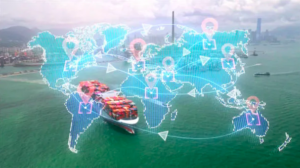A few weeks ago, Donald Trump made the news by expressing an interest in buying Greenland, trying to open a diplomatic channel between Washington and Copenhagen, in accordance with the island’s status of autonomous territory within the Kingdom of Denmark. The meeting between government officials did not take place (Trump cancelled his visit in reaction to Denmark’s Prime Minister Mette Frederiksen calling the purchase offer “absurd”), however the subject shifted experts’ focus to the increasing relevance which Arctic regions could have in influencing the future direction in international relations. Regardless of the credibility of Trump’s purchase offer (and it should be reminded that the purchase of land deemed strategic is a classic of US international policy: Florida in 1819 to weaken Spanish influence, Alaska in 1867 as a buffer against Tsarist Russia, and US Virgin Islands, then-Danish West Indies, in 1917 in fear of a German invasion of Denmark), this needs to be read in the wider context of the current US-China trade war. Indeed, China has unveiled a vision to build a Polar Silk Road, whereas the United States are attentive to monitor Chinese moves within the strategic field of natural resources.
Specifically, rare earth minerals have a crucial role in defining the future perspectives for Greenland – and, more generally, for the whole modern production system. These 17 elements test the political waters in virtue of their strategic importance for producers of smartphones, computers, car batteries, superconductors, and medical equipment. Geographically speaking, China concentrates about 80% of known reserves within its national borders, giving the Middle Kingdom a chance to exercise control over exports. But the concept of rarity is not related to their difficult localization, instead it is linked to their low concentration which makes the exploitation costs higher than expected. These geochemical properties helped China become the leading producer of rare earths in the 1990s, and created the conditions to impose taxes that raised the price by over 3000% in 2009, negatively impacting the technological sector’s competitiveness. Tech is a cornerstone of the US economy, and companies’ performance may be affected by price volatility, which in turn requires alternative approaches including the implementation of partnerships with Chinese counterparts to move production to China.
In this framework, Greenland started to play a key role in 2013, when Parliament voted to abolish a law prohibiting the extraction of rare earths. Initially, the legal restriction was put in place on the grounds that some of these minerals could be radioactive, but its removal allowed the development of the site of Kvanefjeld, the world’s second largest deposit of rare earth oxides. The primary objective for former Prime Minister Aleqa Hammond was to revive the mining sector through foreign investments, in order to create new jobs, spur the building of a network of infrastructures, and achieve gradual economic independence from Danish subsidies – which have been supplying nearly 60% of the Greenland’s government revenues over the past years. These new circumstances fostered the expansion of foreign multinationals such as Chinese company Shenghe Resources, which operates in collaboration with the Australian Greenland Minerals, and the China National Offshore Oil Corporation which is still working on obtaining exploitation concessions.
Another significant example of Greenland’s strategic importance for both China and the US is the negotiation for the construction of two airports with the participation of the China Communication Construction Company (CCCC). Despite initial enthusiasm, the Chinese state-owned company eventually withdrew its bid, marking the end of China’s involvement in these infrastructural projects. China’s withdrawal from the project stemmed from the resistance of institutional bodies in Denmark, which overlook Greenland’s national security and foreign policy. According to Copenhagen, further dialogue with the CCCC would have given rise to friction with the United States, which operate a military air base in Thule. Obviously, Danish opposition to Chinese involvement in the project is rooted in the country’s historical alignment with the US, and in the shared intention of countering China’s recent Arctic Policy.
On January 2018, China promulgated a White Paper to formalize the vision for a Polar Silk Road. With this document, Beijing highlighted the centrality of the Arctic regions in reaching the country’s development targets. China, which self-identified as a “Near-Arctic State”, emphasized the urgency of taking an active role in limiting the repercussions on national economies caused by global warming. In order to achieve these goals, activities in scientific research, resources exploration, and mutually beneficial strategies among local and foreign stakeholders are being put forward. Additionally, global warming outlines new opportunities thanks to the opening of commercial routes that were impracticable before. Across the Arctic Ocean, goods could be transported all-year-round, reducing costs and the time to reach ports in the Mediterranean. It is equally important to look at how China’s Belt and Road Initiative in the Arctic could consolidate ties between Beijing and Moscow as a result of a possible increase in natural gas imports from the North of Russia.
China’s aspirations to become once again a regional hegemon are not well perceived by the United States, which aim to curb the multiplication of economic interests and diplomatic links that characterize “China’s global grid”. Ever-expanding its influence radius, China is now aiming for Greenland’s shores, where vast expanses of ice, colorful houses, and the wind that marks the rhythm of an apparent quiet life conceal the reality of a land at the center of global powers’ ambitions.
Picture credits: eturbonews.com






Be First to Comment